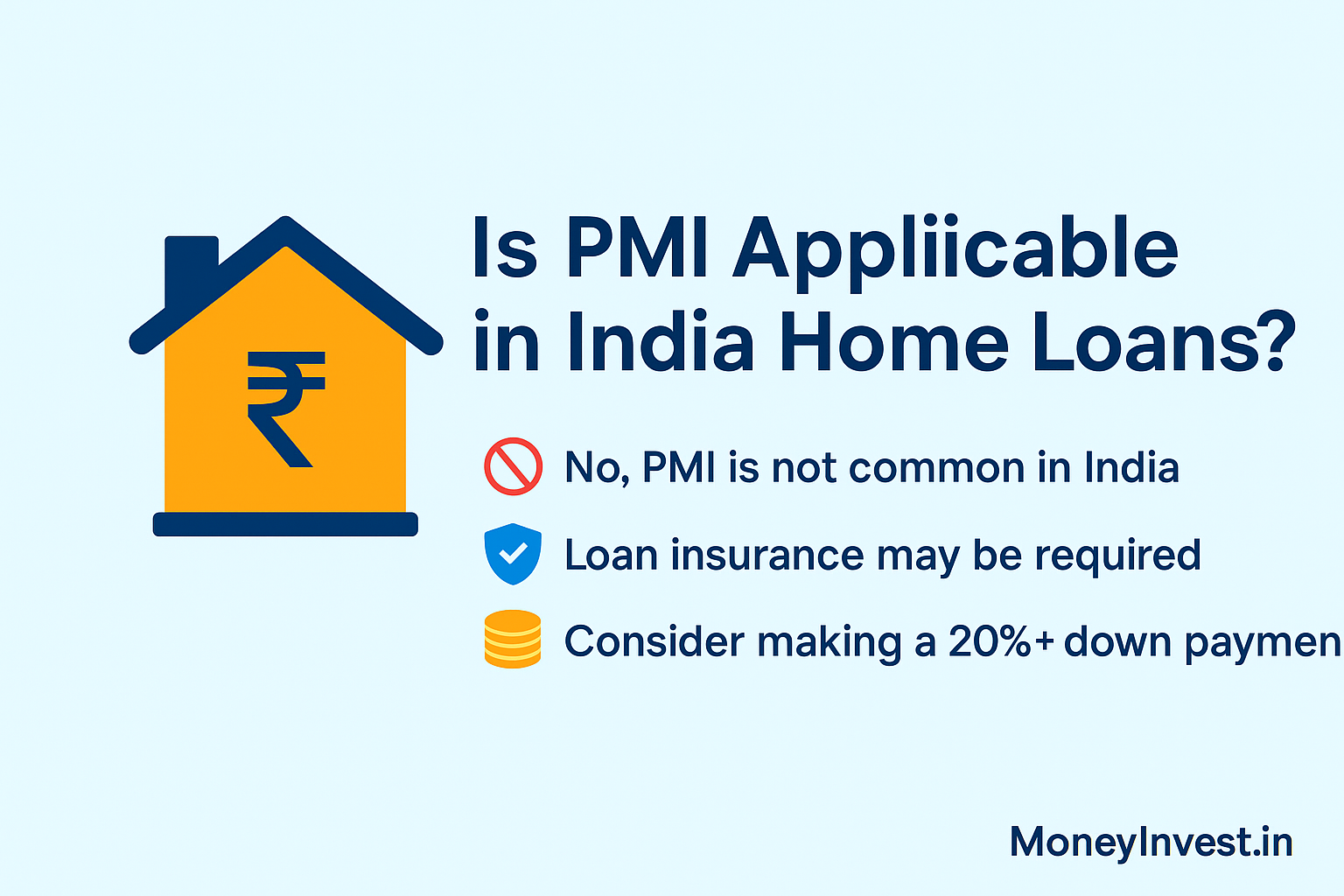You may come across the term PMI – Private Mortgage Insurance. It is very common in the United States, but does it apply to home loans in India? Let’s break it down.
What is PMI?
PMI is insurance that protects the lender, not the borrower. It is usually required when a buyer makes a small down payment (less than 20% of the property value).
Example: In the US, if you buy a ₹80 lakh home with only ₹8 lakh down (10%), you must pay PMI along with your monthly EMIs until your loan-to-value (LTV) ratio falls below 80%.
Is PMI Required in India?
The short answer: No, PMI is not common in India.
Indian lenders manage risk differently:
- Higher Interest Rates: If your down payment is small, banks may simply charge a slightly higher interest rate.
- Loan Cover Term Insurance: Many banks suggest or mandate a one-time premium insurance that covers the outstanding loan amount in case of the borrower’s death.
- Mortgage Guarantee Schemes: Rarely, lenders may tie up with companies like India Mortgage Guarantee Corporation (IMGC) to cover high-risk loans. But this is not the same as monthly PMI charges in the US.
Key Difference: US vs India
| Feature | US (PMI) | India (Home Loans) |
|---|---|---|
| When required? | Down payment <20% | Rare; usually replaced with loan insurance |
| Who pays? | Borrower | Borrower (but usually for one-time insurance) |
| Payment mode | Monthly premium added to EMI | One-time premium or higher interest rate |
| Can it be cancelled? | Yes, once LTV <80% | Not applicable |
What Should Indian Borrowers Know?
- You do not pay monthly PMI in India.
- Be prepared for lenders suggesting a home loan insurance policy.
- Aim for at least 20% down payment to get the best loan terms and lower costs.
Bottom Line
While PMI is common abroad, Indian borrowers usually don’t need to worry about it. Instead, focus on making a healthy down payment and comparing loan offers to reduce your overall cost of borrowing.
👉 You can also check our Home Loan Readiness Calculator to understand how much loan you can comfortably afford.

